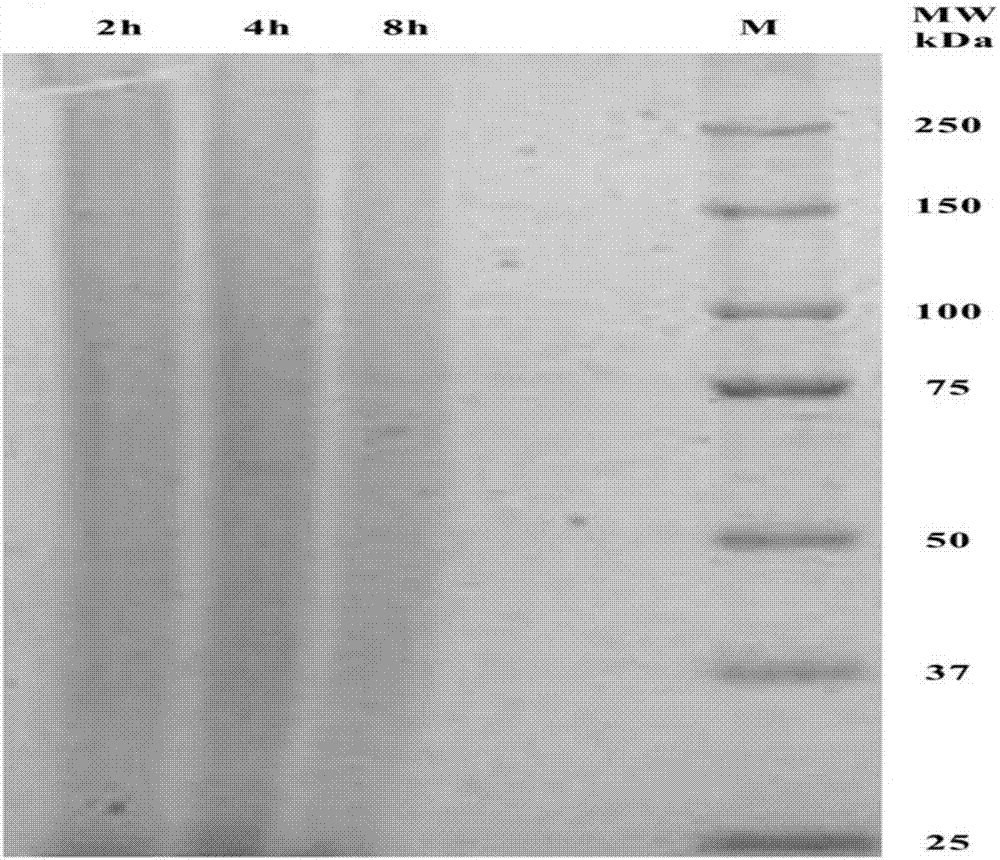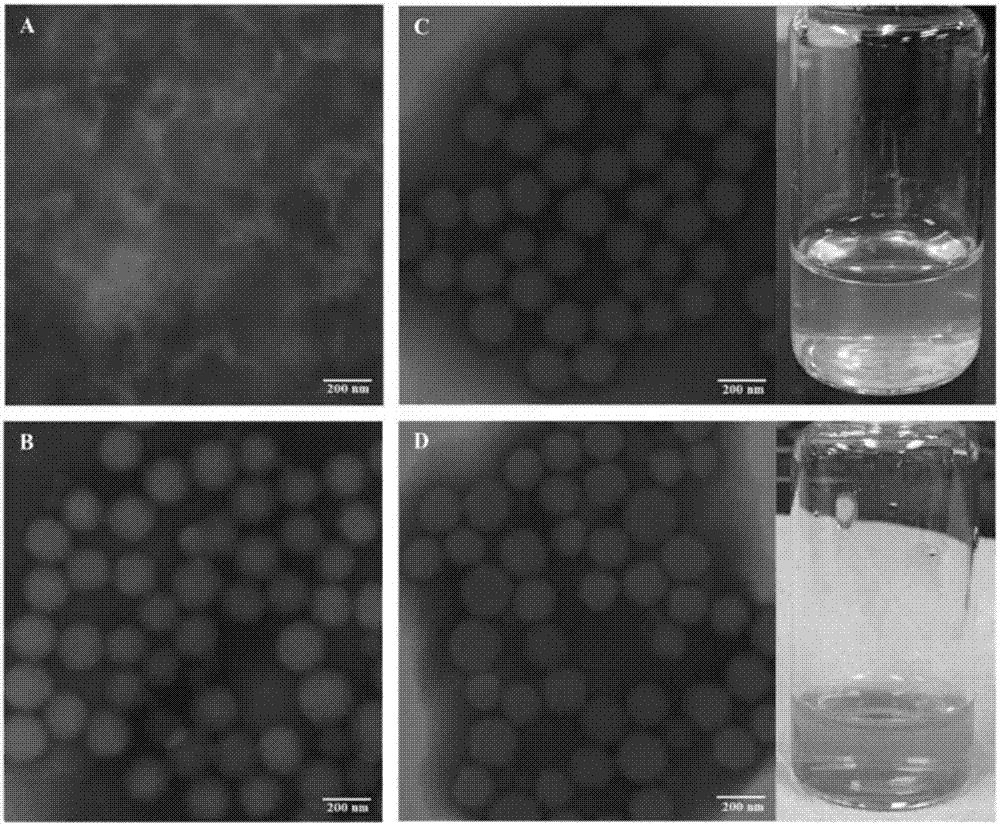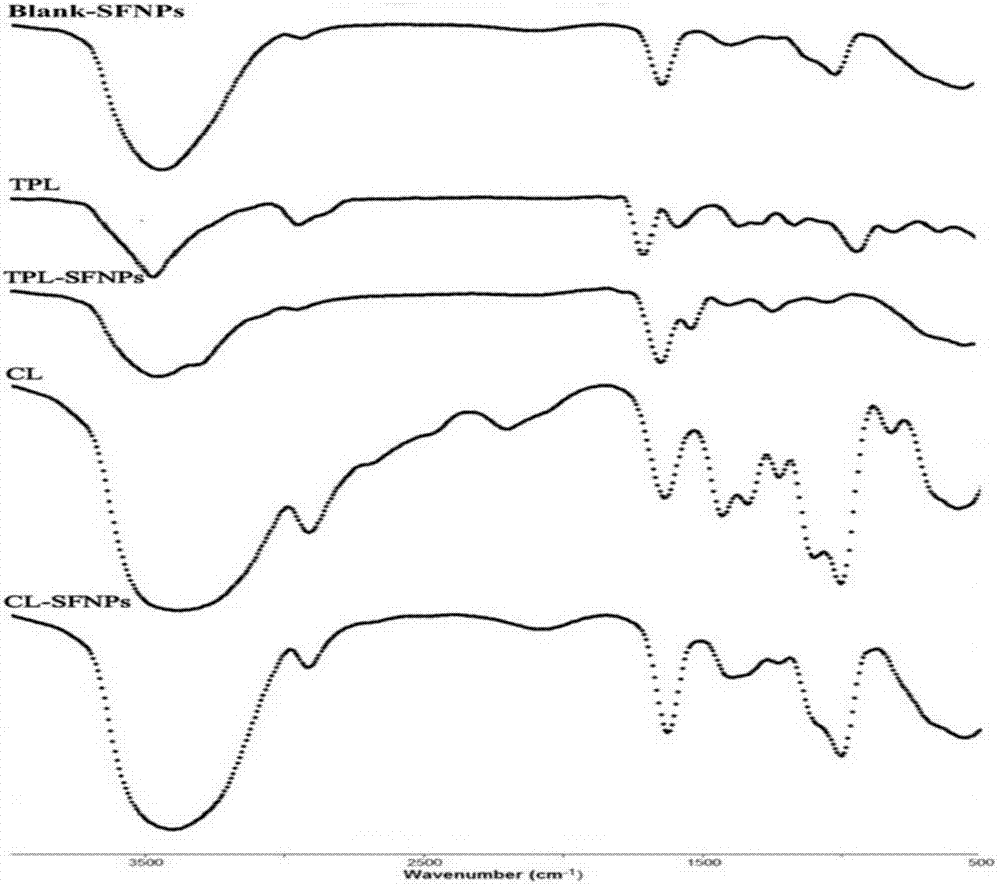Silk fibroin nanoparticle and application thereof
A nanoparticle and silk protein technology, applied in the field of medicine, can solve the problems of toxicity, inability to apply TPL and CL, poor water solubility, etc., achieve high safety, inhibit cancer cell proliferation, and strengthen the effect of inhibition
- Summary
- Abstract
- Description
- Claims
- Application Information
AI Technical Summary
Problems solved by technology
Method used
Image
Examples
Embodiment 1
[0042] Example 1 Preparation of silk protein nanoparticles
[0043] 1. Preparation, purification and molecular weight of regenerated silk fibroin (SF)
[0044] Cut the purchased silkworm cocoons into small pieces, and in 0.02M Na 2 CO 3 Degumming twice for 30 minutes each, and rinsed thoroughly with deionized water. After air drying, the degummed silk fibroin (SF) was dissolved in the ternary system CaCl 2 -CH 3 CH 2 OH-H 2 O (1:2:8 molar ratio), stirring was continued at 75°C for 4 hours. In addition, the resulting SF solution was centrifuged at 4500 rpm for 5 minutes. The supernatant was carefully collected and dialyzed against deionized water for 3 days in a Viskase dialysis membrane (MWCO 7000 Da) to remove salts and ethanol. After centrifugation at 14000 rpm for 15 minutes, the concentration of the prepared silk fibroin solution was measured using a NanoDrop™ 2000 / 2000c spectrophotometer. The molecular weight range of the extracted SF was analyzed by SDS-PAGE (8%...
Embodiment 2
[0058] Example 2 Nanoparticle Characterization
[0059] 1. Method
[0060] 1.1 Particle Size, Zeta Potential and Morphology
[0061] Freeze-dried SFNPs were dispersed in deionized water (pH 7.0). The average size and zeta potential of NPs (Blank-SFNP, TPL-SFNP, CL-SFNP) were determined by dynamic light scattering detection (NanobrookOmni, Brookhaven Instrument Corp) (all measurements were performed three times at room temperature). Morphological examination of NPs and SFs was performed by transmission electron microscopy (TEM, H600, HITACHI, Japan). SF was diluted and lyophilized NPs were resuspended with deionized water. Additional samples were prepared by placing a drop of the dilute suspension on a copper grid coated with a carbon film. The surface morphology of the samples was then observed under TEM.
[0062] 1.2 Infrared spectrum IR absorption and β-sheet content
[0063] FTIR spectra of drug-loaded SFNP as well as free drug were performed using a Fourier transform...
Embodiment 3
[0083] Example 3 Safety Evaluation of Blank SFNPs and Drug-loaded SFNPs
[0084] 1. In Vitro Hemolytic Assay
[0085] The hemolytic assay of SFNP and drug-loaded SFNPs was carried out in vitro to investigate their biocompatibility. Briefly, 0.2 mL of 3.8% sodium citrate was mixed with 4 mL of fresh mouse blood, then centrifuged at 3,000 rpm for 10 min, the precipitate was collected and suspended in 37°C PBS (pH 7.4) and washed 3 times to obtain 5% (v / v) suspension of RCB. 10 mg / mL suspended NPs (Blank-SFNPs, TPL-SFNPs and CL-SFNPs) were incubated with RBCs in PBS. 0.1% Triton X-100 and PBS were added to the RBCs solution as positive and negative controls, respectively. All samples were incubated for 2 hours at room temperature. Then, the sample was centrifuged for 5 min, and 100 μL of supernatant was collected carefully, and transferred to a 96-well plate, and the content of hemoglobin was detected with a microplate reader. Calculate the percent hemolysis according to the...
PUM
| Property | Measurement | Unit |
|---|---|---|
| Particle size | aaaaa | aaaaa |
| Drug loading | aaaaa | aaaaa |
Abstract
Description
Claims
Application Information
 Login to View More
Login to View More - R&D
- Intellectual Property
- Life Sciences
- Materials
- Tech Scout
- Unparalleled Data Quality
- Higher Quality Content
- 60% Fewer Hallucinations
Browse by: Latest US Patents, China's latest patents, Technical Efficacy Thesaurus, Application Domain, Technology Topic, Popular Technical Reports.
© 2025 PatSnap. All rights reserved.Legal|Privacy policy|Modern Slavery Act Transparency Statement|Sitemap|About US| Contact US: help@patsnap.com



